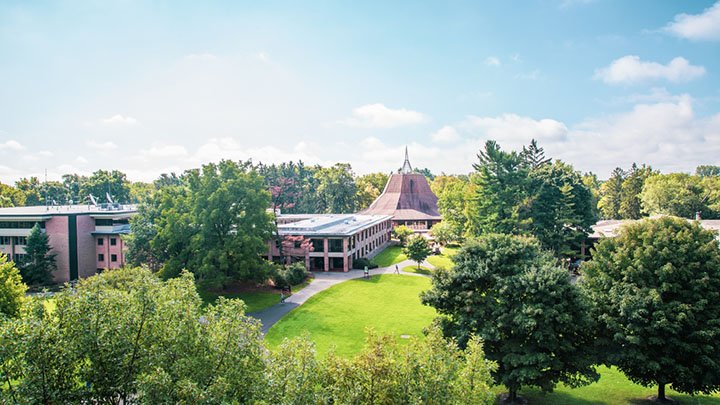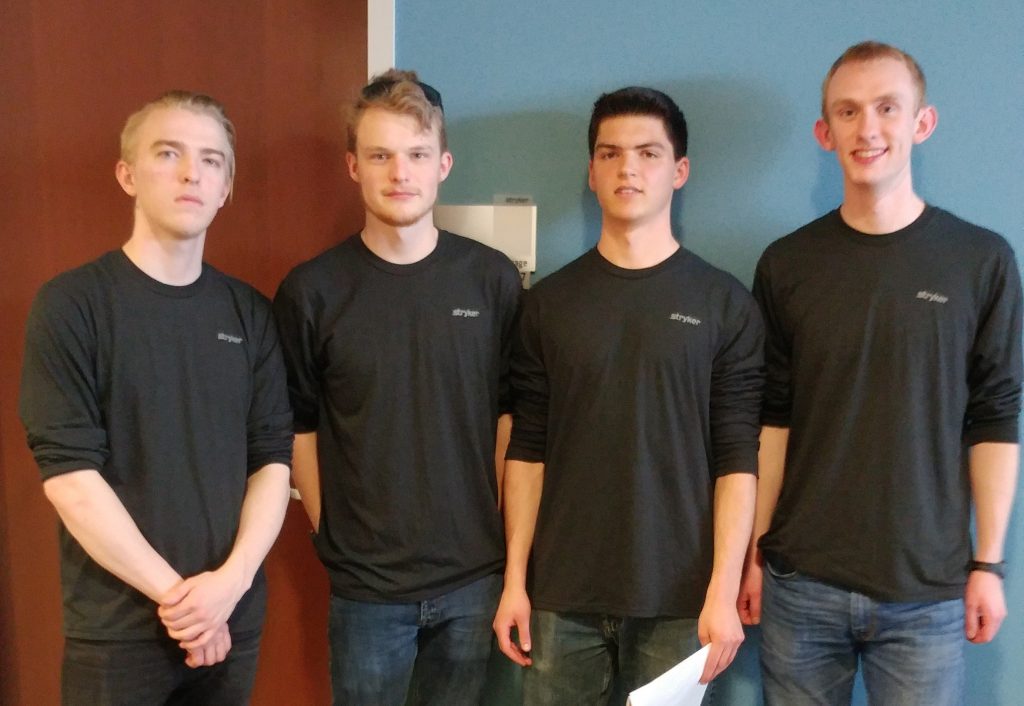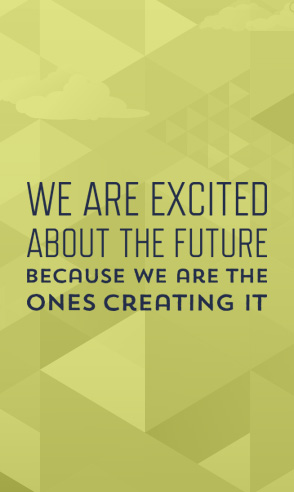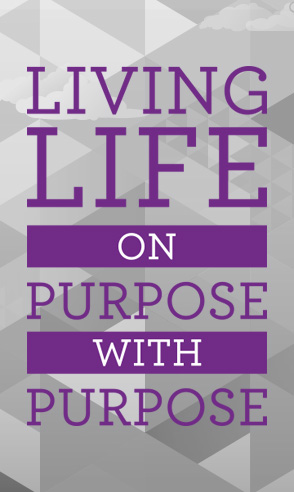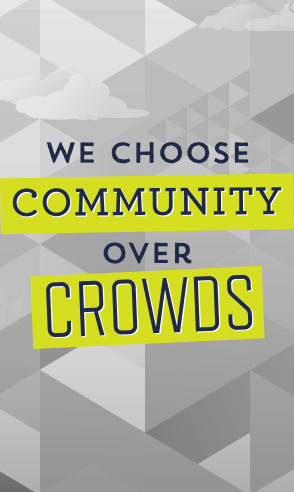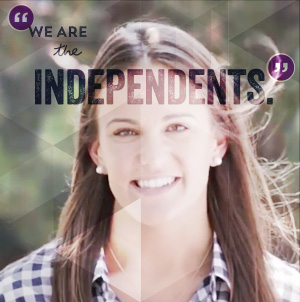Archive for
Calvin Students Place In Top 10% Of Worldwide Programming Competition
Originally posted at https://calvin.edu/news/archive/calvin-students-place-in-top-10-of-worldwide-programming-competition.
Written by Matt Kucinski.
For Calvin University students Kai Arbogast, Zach Clark, and Kris Miedema, October 24 was a day full of problems.
Every hour brought with it a new challenge. It was a new experience for the students.
Challenging the world
“No one [at Calvin] had done this competition before, we weren’t even sure how many teams were in it, and that they’d be from all over, all these major universities,” said Arbogast, an electrical engineering student with a Japanese minor.
The trio of electrical engineering students represented Calvin University in IEEEXtreme’s global challenge—a virtual competition in which teams of IEEE (Institute of Electrical and Electronics Engineers) student members compete in a 24-hour time span against each other to solve a set of programming problems.
Calvin’s team, named DreamTeam, was competing against the likes of UC-Berkeley, North Carolina State, and Milwaukee School of Engineering, to name a few. In all … 3,704 schools from 73 countries competed.
Prepared to tackle many problems
With each hour, came a new problem to solve.
“You were judged on a combo of things, from how fast you completed the challenge to how fast the program itself runs, so on two aspects of speed,” said Clark, an electrical engineering student with computer science and mathematics minors. “Also, how much memory the program uses, and how correct the solution is.”
And while the competition was unlike anything this trio had experienced, the problems were much more familiar …
“I was impressed with how much looking over the problems and practice materials I’d recognized it from a computer science class or Zac and Kai would recognize it from an engineering class that I haven’t taken yet,” said Miedema, a junior electrical engineering student with a computer science minor. “Everything we saw was part of course material at Calvin. We felt very well prepared to use what we learned to solve the problems they gave us.”
And so any trepidation the three had about this uncharted terrain was soon brushed away.
Scoring high marks
“Once we got in and started rolling, we started realizing we were doing really well,” said Miedema.
The team was able to see a scoreboard as they were going, and finished the competition with a strong surge that placed them in the top 10% worldwide, and 14th among all participating colleges and universities nationwide.
“I didn’t expect to do that well,” said Clark.
“I’ve already been impressed by the quality of education at Calvin and how I’ve been able to use the knowledge I’ve gained here in my internships,” said Arbogast, “but I also recognized in this [challenge] that Calvin can be competitive with any schools in the nation. The material we’re learning is both current and valid, and we can use it.”
Ready for anything
The competition was a testing ground of sorts for the three. And for the two seniors who will graduate this spring, it was confirmation that they are ready for their fields.
For Clark, his career pursuit is fulfilling a childhood dream he first verbalized at a Lego convention in eighth grade. “Someone had built a machine that would take colored balls and sort them and it had a whole bunch of robot arms and stuff. I remember thinking ‘that is so cool, I want to do that someday,’” said Clark.
Several years later after having taken a domestic and an international flight, his wonder turned to the sky. “I was amazed that this gigantic metal tube could keep itself in the sky and fly, and so my interest started to point toward aerospace engineering.”
He’s still passionate about aviation-related engineering and may continue to pursue that path. For now, an internship at Calvin has already led to a job offer from DornerWorks, an engineering firm in Grand Rapids.
For Arbogast, he’s always enjoyed his STEM-related classes. And he likes designing and building things. He also has an interest in working in Asia in the power grid. His internships at Calvin are power-related, and combined with his engineering courses, he’s gaining much relevant hands-on experience in his field. But he says classes outside his major are also helping set him up for long-term success.
“It’s all the things that we need to be successful engineers that don’t just lie inside of engineering,” said Arbogast. “But, the writing skills especially. The skills I developed in classes not in my major, but through core. This summer those skills were super helpful as I had to document a lot (for my engineering internship) and so those writing classes helped with accurate documentation and with good grammar.”
At Calvin, he was also able to combine both his love for engineering and Japanese culture, by having a Japanese minor.
And while Miedema is only a little over halfway into his time at Calvin, he’s already gained a lot of experience.
“I did the engineering summer program in Germany and to have that cross-cultural experience where we learned so much about engineering in a different culture, that element helped prepare me as I look into what I want my work experience to look like,” said Miedema.
Perhaps Clark summarizes their paths through Calvin best: “The things we’ve learned at Calvin are able to help us with a range of things. It’s easy to take what we’ve learned here and apply it elsewhere.”
So, when another problem arises. This trio will be well-equipped to find a path forward.
At Michigan’s 14 independent colleges and universities students forge success by following their own path. The colleges are purposefully smaller and emphasize community over crowds. Classes are taught by award-winning faculty rather than TAs, allowing students to forge tight bonds with professors. Often less expensive than public institutions, the independents boast higher four-year graduation rates and smaller class sizes for a truly unique and affordable experience.
To learn more about Michigan’s top 14 private colleges and universities, visit our Colleges page.
Scholarships are available! Enter the We Are The Independents scholarship drawing.
Make Your College Campus Visits, Virtually
While in-person admissions visits at Michigan’s top 14 private colleges and universities have been canceled due to the coronavirus pandemic, prospective students can still explore these beautiful campuses with the click of a button!
With virtual tours available, you can still get the chance to “walk” the campus, see and feel what life could be like for the next four years. The online tours not only give you a peak into each campus, but many schools even allow you to schedule an online information session with a live admissions counselor! Get your questions answered and make an informed choice now from the comfort of your home.
Get more information in the links below:
Alma College Virtual Tour | Schedule a Virtual Visit
Andrews University Virtual Tour | Sign up for a Virtual Preview
Aquinas College Virtual Tour | Schedule a Virtual Personal Visit
Calvin University Virtual Tour | Schedule a Virtual Visit
Hillsdale College Schedule a Virtual Visit
Hope College Virtual Tour | Schedule a Virtual Visit
Kalamazoo College Virtual Tour | Schedule a Virtual Visit
Madonna University Campus Tour Video | Schedule a Virtual Visit
Siena Heights University Virtual Tour
Spring Arbor University Virtual Tour | Schedule a Virtual Visit
University of Detroit Mercy Virtual Tour | Sign up for a Virtual Information Session
Michigan Colleges Alliance Team Wins 2019 Stryker Engineering Challenge
For the past five years, Michigan Colleges Alliance (MCA) has fielded a team of four students from its member schools with engineering programs to compete in the annual Stryker Engineering Challenge. For the first time this year, the MCA team won against competing teams from Michigan Technological University, University of Michigan, Michigan State University, Western Michigan University, Purdue University, and University of Notre Dame. The winners of the competition received a $1,000 scholarship (each) and an interview opportunity for a 2020 internship.
The Stryker Engineering Challenge is an overnight challenge where teams are given materials and approximately 12 hours to build a robot vehicle designed to navigate the challenge. Each robot is remote-controlled and tested in a 30-minute competition. During the competition, the robots are challenged to pick up Legos and race through an obstacle course. This year marked the ninth annual challenge with teams representing eleven different schools.
This is the fifth year that MCA has fielded a team. In 2015, the MCA team came in second place, and this year they won. The team was comprised of Devin Garcia & Jeremy Barrett of Andrews University, Denise Roorda of Calvin College, and Joshua Cormier of University of Detroit Mercy. The team took first place with 204 points and Michigan Technological University was a close second place with 203 points.
The students from the Michigan Colleges Alliance team had never worked together before the Stryker Challenge as they each attend different schools. Their victory is a testament to the high-caliber MCA schools and students, and their ability to work collaboratively in new situations.
Michigan Colleges Alliance is very appreciative of Professor Gunnar Lovhoiden, professor of engineering at Andrews University, who has served as the faculty mentor each year for this competition. Each year, he has generously donated his time during spring break to take on this role demonstrating an example of the strong student-faculty relationships valued at MCA schools. “The MCA team worked really well together and maximized their performance by making good design decisions,” he says.
Hyun Kwon, chair of the Andrews University Department of Engineering, adds, “I am so proud of our students. They have proven the ability to successfully compete at such a high level and against much larger schools.”
Calvin University coming July 10
On July 10, 2019, Calvin College officially becomes Calvin University. The date coincides with Reformer John Calvin’s birthday, for whom the institution was named at its founding in 1876. The Calvin community will commemorate the significant milestone with a series of events, including a panel discussion, dedication service, and celebration cookout. View the full lineup of events.
“This is an exciting time in Calvin’s history,” said Michael Le Roy, president of Calvin University. “This change to university grants us permission to think and dream and hope and aspire to a great deal more as we engage with more learners around the world.”
What began nearly 150 years ago in a single classroom on Williams Street in downtown Grand Rapids, with one faculty member, one academic discipline, and just seven students, is now a university sprawled out over a 400-acre campus, offering more than 100 academic options to 3,700 students each year from more than 65 countries. It’s an institution of 250 Christ-centered faculty who are thought leaders in their fields. And, it includes an alumni network of more than 65,000 who are expressing Calvin’s mission to think deeply, to act justly, and to live wholeheartedly as Christ’s agents of renewal in the world.
“The college or university takes different forms over time, serves different populations over time in history. But that mission critically endures,” said Le Roy.
Extending reach, deepening roots
In becoming a university, and as part of Vision 2030, Calvin is aspiring to extend its reach and deepen its roots by expanding its global influence, growing as a trusted partner for learning, and deepening its commitment to the Reformed Christian faith.
“We have a distinctive and enduring Christian mission that we are excited to share with more people around the corner and across the globe,” said Craig Lubben, chair of the Calvin University Board of Trustees. “As we look to the future of Calvin, we are confident that this name change will help us better reflect who we are to audiences both familiar with and new to Calvin and propel us further as we fulfill a compelling vision.”
How Calvin will pursue this vision over the next decade is laid out in the university’s recently approved strategic plan. The plan includes four key goals.
Expanding programs, inviting new learners
First, the university will expand its offerings to undergraduate students and its use of digital systems and platforms to meet the needs of learners of all ages, all over the world; like Calvin’s new Spanish Immersion program, which will serve high school students; adding more graduate programs; and partnering on educational endeavors like the Calvin Prison Initiative in Ionia and the Lumina Partnership in Hong Kong.
“I’d like us to be a place where folks think ‘I wonder what Calvin has to offer in that space?’ And knowing then that it would come from a place that thinks deeply about its work and about how to do these things well,” said Cheryl Brandsen, provost.
Collaborating to create solutions
Second, Calvin will look for more ways to collaborate to enhance learning. Drawing on the strength of its scholarship and its depth of learning, it will direct institutional resources toward opportunities that encourage faculty and students to work across disciplines and with local and global partners in tackling complex issues.
“We need to work effectively with community partners. We need to hear lots of voices that are bringing their expertise, their own experience to the table to figure out how to solve problems,” said Amy Wilstermann, professor of biology.
Creating spaces to thrive
Thirdly, Calvin will invest in its learning environments as it supports a thriving educational community. This includes continuing to update classrooms to meet the needs of current and future learners, designing spaces that spur collaboration and innovation, and creating places like the Commons Union that promote community and support the well-being of people and creation.
“When we create places on campus where we encounter different ideas, different viewpoints, learning that perhaps we’ve never thought about before, that begins to shape not just the way we think, but the way we act and we live into those truths,” said Sarah Visser, vice president for student life.
Deepening Christian commitment
And finally, central to the university’s entire vision is helping faculty, staff, and students more fully embody a faithful and engaged Reformed Christianity.
“The Reformed project invites us to bring our whole selves into this academic institution. There’s no subject that’s off limits, because all knowledge belongs to God,” said Michelle Loyd-Paige, executive associate to the president for diversity and inclusion. “We are called to unpack this knowledge and to use this knowledge to make a difference in the world. Our Reformed faith invites us to do this, our Reformed faith compels us to do this, and our Reformed faith helps us to do this well.”
Learn more about Calvin’s history, the decision for the name change to Calvin University, and about Calvin’s vision for the next decade.
About Calvin University
Founded in 1876, Calvin University is a top-ranked, liberal arts university located in Grand Rapids, Michigan, that equips its more than 3,700 students from 45 U.S. states, 65 countries, and five Canadian provinces to think deeply, to act justly, and to live wholeheartedly as Christ’s agents of renewal in the world.
Calvin offers 100+ majors and programs, including graduate-level offerings in accounting, education, and speech pathology and audiology. Calvin students engage in intensive internships, community-based service learning, and significant research that results in publishing and presenting alongside world-class faculty.
Calvin also promotes Christian thought and action on an international stage in key areas of education and culture through its 12 centers and institutes. Discover more about Calvin.
When is the best time to visit colleges?

(Albion College, voted 12th Most Beautiful College in Winter)
It’s winter, and the tundra is setting in – at least it is here in Michigan. The last thing you are thinking about is planning a trip to visit campuses. Those long walks across snow-covered quads are certainly less appealing when the temperatures are teetering at the same level as the number of layers you’ll be wearing to stay warm. Or maybe you are a freshman or sophomore, and it’s just “not time yet.”
So, “When is the best time to visit?” The answer may not be what you expect. Here are some tips for getting the most out of campus visits:
Time of year:
As summer strolls in and the school year winds down, families across the country are gearing with plans to visit college campuses. Tours are crowded, staff is minimal, and quads are relatively barren. Although the summer months are more convenient for your time, ideally you should try to plan your visits when classes are in session and the campuses are full of life. Think of it like trying on a pair of new shoes: do you get the proper assessment while sitting? No, you get up, walk around, and perhaps jog in them… as it should also be done visiting campuses. Simulate the day-to-day as if you are attending the school. It doesn’t necessarily mean go in the dead of winter, but consider this: it may be cold, but it’ll also be cold while you attend, won’t it?
Age of student:
It can be very rewarding to visit colleges and universities before your junior and senior year (read: before it’s decision time). You are less concerned about choosing and “buying” when you are simply “window shopping” and more interested in checking out the inventory. Expose yourself to as many different kinds of places—big schools, small schools, research universities, liberal arts colleges, urban campuses, places way out in the country—to develop a broad perspective of all the different options. Then, when it is time to make a decision, you’ll have a better foundation on which to choose.
Before stepping foot on the first campus (and each one after that…):
Your new mantra: Relax, enjoy, decide later. Resist the impulse to judge immediately, good or bad. Your first reaction is bound to be emotional, and usually overly positive—college is really cool! Sleep on it. Weigh your impressions against the other schools you visit and try to remain as objective as possible so your rose-colored glasses don’t allow you to overlook things.
How to choose:
As you visit the campuses, allow your senses to guide you. Really like something? Take note of it. Feel like something’s missing? Take note of it. Gut instinct is usually pretty accurate. Additionally, the perceptions from your visits will come in handy when completing your college applications. Remember this: tying personal experience to the campus environment will blow the minds of the admissions department!
What to look for:
Focus on fit. We perform at our best when we have a level of comfort, belonging, and value. Questions to ask yourself: How does the college meet my academic needs? Will I be challenged appropriately? Is the style of instruction a good match for how I learn? Does the college offer a community that makes me feel “at home?” Does the college offer extracurricular activities that interest me?
After the visit, before you leave:
Connect with the recruiter. Colleges and universities typically assign admissions personnel to different areas of the country for recruiting efficiency. If your area’s recruiter is available, definitely introduce yourself. Either way, get that person’s contact information. Consider him/her as your “go to” person when you have important questions later in the admissions process. And remember this: there is nothing insignificant nor too embarrassing to ask. The admissions staff is there to help!
What to do next:
Record your visit. Make notes as soon as you are able. The more campuses you visit, the more they will begin to blend together, especially from memory. Take pictures to give yourself a visual index of what you’ve seen to avoid confusion later.
And finally:
Enjoy the process. It can be easy to get lost in the excitement and have that energy turn into anxiety. Relax. Start the search early. Visit during the school year to witness the campus’s true environment. Trust your senses and take notes.
As you map your college visit road trip, include a few of Michigan’s top 14 private colleges and universities on your list. These schools are purposefully smaller and emphasize “community over crowds.” Often comparable in cost to Michigan’s public institutions, the independents boast higher four-year graduation rates, outstanding faculty who help students forge their own paths, and smaller class sizes for a truly unique and personal experience.
Be bold. Be different. Go independent.
Your One-Stop, College Admissions Connection: Virtual College Fair
We’ve said it before. The best way to choose your own path is to visit a college campus… or three. Breathe the air. Wander the student center. Sit in on a lecture. Chat up a few professors. Grab a meal in the dining hall. Stroll through the quad.
But the college search doesn’t usually start with a visit to campus. You might begin by looking at websites or admissions booklets, or attending a college fair to learn more. Pixels and pages are a start, but nothing beats talking to a person, and college fairs can be time consuming to attend. Now, there’s a solution!
Enter the Virtual College Fair. It’s never been easier to connect with a college admissions office and get your big questions answered.
The Virtual College Fair offers free access to video recordings and live streams from Michigan’s top private colleges and universities. Watch the recordings, pick your favorites (or pick them all!), and then register – individually or with your family – to attend a live and interactive web-based Q&A session with admissions and other college representatives. Learn more here.
Like what you hear? Reach out to the college to continue the conversation and maybe even schedule a visit!
Upcoming Live Q&A Sessions
December 4, 2018 at 7 PM: Alma College
December 4, 2018 at 8 PM: Aquinas College
December 5 , 2018 at 7 PM: Madonna University
December 6, 2018 at 7 PM: University of Detroit Mercy
December 6, 2018 at 8 PM: Calvin College
December 11, 2018 at 7 PM: Albion College
December 12, 2018 at 7 PM: Spring Arbor University
December 13, 2018 at 7 PM: Hillsdale College
Michigan Colleges Alliance takes Second in Stryker Engineering Challenge.
Michigan Colleges Alliance (MCA) and its team of four engineering students finished second out of seven teams in the most recent Stryker Engineering Challenge. MCA competed against six teams from University of Notre Dame, Michigan Tech University, Western Michigan University, Miami University of Ohio, and Purdue University. Michigan Colleges Alliances beat out everyone, except for Michigan Tech University, who took first place in the competition.
Their team was a collective team of engineering students from two of their 14 schools, Andrews University and Calvin College. Levi Vande Kamp from Calvin College and Eric Anderson, Darrick Horton, and Justin Wiley from Andrews University made up the MCA team.
Gunnar Lovhoiden, a professor of engineering at Andrews University, supported the MCA team at the competition.
“I think our team worked really well together. Their design worked well and they represented MCA with honor. Second place—how about that,” says Lovhoiden.
This is the 8th year of the Stryker Engineering Challenge. The competition this year was held on March 22nd and 23rd.
Left to right: Darrick Horton (Andrews), Eric Anderson (Andrews), Justin Wiley (Andrews), Levi Vande Kamp (Calvin). (Photo by Gunnar Lovhoiden, professor of engineering)
Calvin College’s Big Idea: Build a Better Window, Save the World

Consider the humble window.
Pretty boring, huh? Only good for looking through and daydreaming, right?
Now consider life without them.
Not so boring anymore. Existence would be a lot more grueling — and expensive. Add in a looming global energy crisis, and suddenly research into better windows is more vital. That’s why what’s happening at Calvin College is so exciting.
The school is partnering with a Grand Rapids firm, Mackinac Technologies Inc., to bring to market a product that vastly improves energy efficiency. The polymer pane that bends is custom fit to existing windows, reducing building energy loss by as much as 60 percent.
“We are providing the testing and analysis to show that the coatings are effective at reducing the heat loss through windows,” Renard Tubergen, an associate professor of engineering at Calvin, told the Grand Rapids Business Journal.
He’s recruited students to participate in the research, along with Richard DeJong, an emeritus professor at Calvin.
The partnership isn’t unique at Calvin or Michigan’s 15 top independent colleges and universities. All are award-winning academic institutions. And all know there’s life outside the lecture hall.
Think big enough. Dream outlandishly. Who knows? You could change the world.
Aided by federal grants, the Calvin-Mackinac partnership could one day help do just that. Highly durable and transparent, the product they’re working on could save one quad of energy if fully implemented throughout the United States.
One quad is the equivalent of 8 billion gallons of gasoline. The United States used 95 quads all of last year. So theoretically, the product could help cut the nation’s energy usage by more than 1 percent — an enormous amount.
Suddenly, the humble window isn’t so humble anymore.
That’s the sort of bold, brash thinking that typifies Calvin and the rest of Michigan’s independent colleges and universities. Daring doers, their faculty encourage students to think differently and chart their own path.
With low class sizes and an encouraging network of alumni, the colleges have a sense of community that simply doesn’t exist at big state schools.
And despite what you may have heard, independents are often less expensive and boast higher four-year graduation rates that big universities.
Be bold. Be different. Go independent.
Kalamazoo Promise Makes Private Education Within Reach

Almost everyone nowadays can cite scary statistics when it comes to the cost of college education.
Nationwide, the average annual tuition at private schools has more than tripled in 30 years jumping to $32,405 this year, according to inflation-adjusted statistics from the College Board.
But the cost of an elite private school education is nothing for students in Kalamazoo public schools.
You read that right.
The cost of Michigan’s 15 independent colleges and universities is zero for students who graduated from Kalamazoo Public Schools and attended since kindergarten. Graduates who attended since at least seventh grade will receive 75 percent of their tuition.
The Kalamazoo Promise is a revolutionary program that is changing lives and putting college in reach for 5,000 eligible graduates since it was launched and funded by anonymous donors in 2005.
The schools now send 85 percent of students to college, whose graduates can expect to earn $1 million more over their lifetime than peers whose education stopped at high school.
And what an education they can get, especially at Michigan’s independents: Adrian College, Albion College, Alma College, Aquinas College, Calvin College, Hillsdale College, Hope College, Kalamazoo College, Marygrove College, Olivet College, the University of Detroit Mercy, Andrews University, Madonna University, Siena Heights University and Spring Arbor University.
The schools pride themselves on helping students forge their own path. Classes are taught by professors, not teaching assistants, with average class sizes of just 17.5 students.
The independents open doors to a host of careers, from business and engineering to education and nursing, supported by a nurturing network of alumni who have become leaders in their fields.
And the independent colleges look like the world around them. One in 4 students at Michigan private colleges and universities is African American, American Indian, Asian, Hispanic or Latino.
Be bold. Be different. Go independent.
Calvin Nursing Camp Strengthens Community Bonds
They sat in a circle, these girls from inner-city Grand Rapids, laid their hands on their neighbor and listened for a pulse.
So began an innovative, soul-searching week at Calvin College last month, which brought in 50 girls from three neighborhoods to learn about their health, God and themselves.
They were there for HEALTH Camp — Health, Education and Leadership Training for a Hopeful future. The first-of-its kind day camp at Calvin is an outgrowth of an eight-year outreach between Calvin’s nursing department and three Grand Rapids neighborhoods.
The girls learned some basic nursing skills, assisted at Calvin’s Health Service department and were taught by faculty and others about reproductive health, exercise, nutrition, chronic disease and more.
“These girls are the future of these neighborhoods, and it’s empowering for them to understand how their bodies work and how to keep themselves healthy,” said Elise Veurink, a Calvin senior and nursing student.
The camp was an effort of 10 Calvin departments. One main goal is to prevent unintended pregnancies. Another is self-respect. Long-range plans call for the idea to spread, empowering girls in other communities to respect their bodies and themselves.
“We want (this) to grow, even beyond our Grand Rapids neighborhoods, to continue to make an impact,” said Adejoke Ayoola, a nursing professor who launched the program.
“We hope the camp brought an increase in knowledge to the girls, but we also hope for change in behavior down the road, that they would actually adopt a culture of health.”
Community. It’s what sets apart Calvin College and Michigan’s other top 15 private colleges and universities.
They’re not merely in towns and cities. They are an integral part of their fabric, reaching beyond campus walls and greens to improve the lives of those around them.
It’s one of many differences with traditional universities.
Unlike big state schools, class sizes are small and taught by incredible faculty who help students forge their own path.
They have a deep and committed network of alumni who help after graduation. It’s an experience that simply isn’t available at traditional universities.
And despite what you may have heard, independents are often less expensive and boast higher four-year graduation rates than four-year institutions.
Be bold. Be different. Go independent.




